#lyft clone
Explore tagged Tumblr posts
Text
Boosting User Engagement and Revenue with a Customized Lyft Clone App in South Korea
Lyft and similar ride-hailing apps have revolutionized transportation, offering convenient on-demand services. If you've launched a Lyft clone app specifically for the South Korean market, you possess a powerful tool to connect riders and drivers. But with established players and cultural nuances to consider, how can you boost user engagement and maximize revenue in South Korea? Here, we explore key strategies to tailor your app for the South Korean market and make it a thriving business.

Understanding the South Korean Market:
Tech-Savvy Users: South Korea boasts a highly tech-savvy population. Leverage this by ensuring your app is user-friendly with a sleek, intuitive interface in Korean.
Cashless Society: South Korea is a leader in cashless transactions. Integrate popular Korean mobile wallets like KakaoPay and Naver Pay for seamless in-app payments.
Strong Public Transportation: Public transportation is robust in South Korea. Offer competitive fares and unique value propositions to attract users away from traditional options.
Engaging South Korean Riders:
Super Apps: Consider integrating features beyond just ride-hailing. Partner with local service providers to offer food delivery, errand services, or even karaoke bookings within your app, creating a comprehensive super-app experience.
Loyalty Programs: South Koreans appreciate loyalty programs. Implement a points system where riders earn points for every ride, redeemable for discounts or free rides.
Social Media Integration: Social media plays a prominent role in South Korea. Integrate social media logins for easy registration and consider features like ride-sharing options or referral bonuses through social media platforms.
Engaging South Korean Drivers:
Flexible Work Schedules: Offer flexible work schedules to cater to drivers who may have other commitments. This can attract a wider pool of talent.
Transparent Earnings: Ensure transparent earnings breakdowns within the app. Highlight potential earning opportunities during peak hours or high-demand areas to incentivize drivers.
Community Building: Foster a sense of community among drivers. Implement features like driver forums or recognition programs to boost morale and driver retention.
Monetization Strategies Tailored for South Korea:
Dynamic Commission Rates with a Korean Twist: Implement dynamic commission rates that consider factors like peak hours, demand, and distance. However, be mindful of cultural preferences for fairness. Consider a minimum guaranteed income during off-peak hours to incentivize driver availability Lyft clone script.
In-App Advertising: Partner with relevant Korean businesses to display targeted advertisements within your app. Ensure the ads are culturally appropriate and provide value to users, promoting Korean restaurants, local attractions, or relevant services.
Subscription Plans (Optional): Consider offering optional subscription tiers for riders with recurring needs. These plans could provide benefits like discounted fares, priority booking during peak hours, or ride-sharing options at a reduced cost.
Additional Considerations for South Korea:
Regulations: Ensure your app complies with all relevant South Korean regulations regarding ride-hailing services, insurance requirements, and data privacy.
Multilingual Support: While Korean should be the primary language, consider offering additional language support (English, Mandarin) for tourists or foreign residents.
Accessibility Features: Integrate accessibility features within your app to cater to users with disabilities. This demonstrates inclusivity and expands your user base.
Trioangle Technologies: Your Customized Lyft Clone App Development Partner
Trioangle Technologies empowers you to build a robust Lyft clone app development tailored for the South Korean market. Here's why they stand out:
Customization Expertise: They excel at customizing their script to integrate features specific to your market needs, like popular Korean payment methods and super-app functionalities.
Localization: They can assist with app localization, ensuring the user interface and content are culturally appropriate for the South Korean audience.
Compliance Guidance: They can provide guidance on navigating South Korean regulations related to ride-hailing services.
Conclusion
By understanding the South Korean market, implementing user-centric engagement strategies, and crafting a culturally appropriate app experience, you can position your Lyft clone app for success. Remember, the key lies in offering exceptional value to both riders and drivers, fostering a sense of community, and staying compliant with local regulations. Partner with Trioangle Technologies to leverage their expertise and create a thriving ride-hailing platform that caters to the unique needs of the South Korean market.
0 notes
Text
Learn how to develop a taxi booking app using a Lyft clone app with our comprehensive step-by-step guide. From research and planning to customization, integration, and deployment, follow this guide to create a successful ride-hailing platform.
#lyft clone app#lyft clone script#lyft clone#lyft app#app like lyft#taxi booking script#taxi booking clone app#lyft app development
0 notes
Text
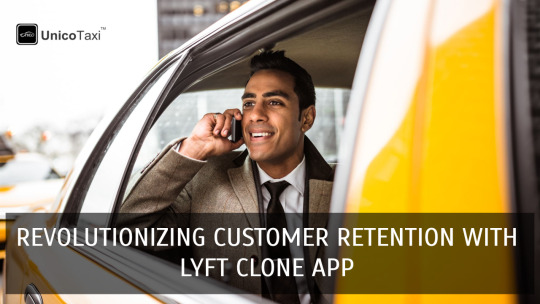
How White Label Lyft clone app revolutionize your ride-hailing business?
Get the best lyft clone app script with customizable features at unicotaxi, Book a free demo now!
1 note
·
View note
Text
How to Build a Ridesharing App like Lyft: Key Features & Development Costs
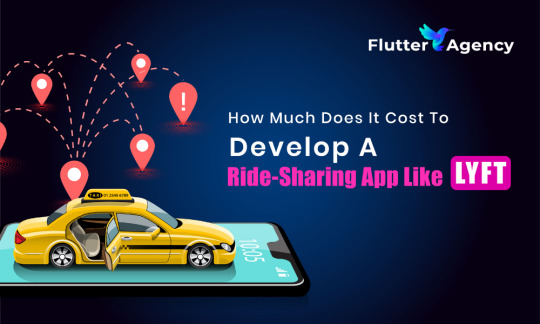
Lyft and similar services revolutionized travel, boosting accessibility and efficiency. These ride-sharing apps improved transport and user experience. They also changed urban mobility.
The demand for custom application development services surges as digital needs increase. Businesses scramble to meet soaring demand for tailored software solutions. It allows businesses to tap into a thriving market.
Why Build a Ride-Sharing App Now?
In 2023, the ride-sharing industry hit $106.70 billion globally. Projections for 2024 show a climb to $126.46 billion. By 2034, experts foresee a staggering $691.63 billion valuation. This sector’s robust 18.52% yearly growth rate, spanning 2024 to 2034, signals a transformative decade ahead for urban mobility and transportation economics (source)
Urban sprawl, pricey gas, and eco-friendly trends fuel ride-sharing’s rise. Commuters and companies alike embrace this cost-effective, green transport solution. As cities grow and budgets shrink, shared rides beat solo driving.
Ride-sharing apps offer lucrative opportunities for businesses of all sizes. New players can challenge industry giants by targeting niches or local markets. Innovative features set newcomers apart in this essential urban service. As AI and self-driving tech evolve, custom apps unlock growing markets.
Both startups and established firms can profit from this transport revolution. They can carve out a niche in an ever-expanding digital world.
Key Features Required for a Successful Ride-Sharing App
Seamless experiences drive successful ride-sharing apps. Users crave intuitive interfaces for quick bookings, real-time tracking, and secure payments. Drivers need efficient route planning, fair compensation, and easy communication.
Both benefit from robust profiles, rating systems, and responsive customer support. Safety features like emergency contacts and driver verification build trust. Integrating maps, GPS, and push notifications ensures smooth operations.
A well-crafted app balances these elements, creating a user-friendly ecosystem that keeps riders coming back and drivers engaged. Constant refinement based on feedback fuels continuous improvement, keeping the app competitive in a crowded market.
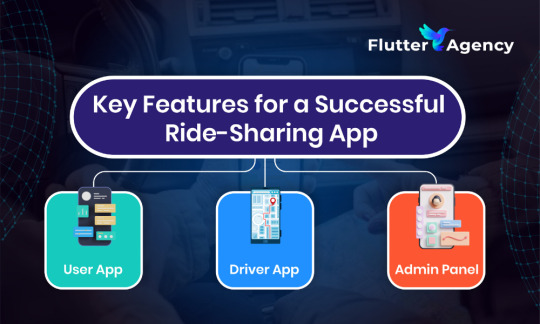
User App:
Simple Registration and Onboarding: Connect effortlessly. Email, phone, or social media—pick your path. Our swift signup process welcomes all users, boosting retention through seamless onboarding. Create your account now and join our community without delay.
Book, estimate, track: Riders crave simplicity. A few taps should secure transport, reveal costs, and display live journey updates on an interactive map. Seamless functionality empowers passengers, transforming travel into a smooth, predictable experience.
Payment Gateway Integration: Streamline purchases with multiple payment options: credit, debit, and e-wallets. Quick, hassle-free transactions await.
Feedback: Riders can rate and review drivers. This ensures high service standards.
Driver App:
Driver Profile Setup and Verification: Drivers must create a profile and verify their identity for safety.
Ride Request Notifications and Navigation Assistance: Drivers get ride requests. They use the app to navigate to destinations quickly.
Earnings Dashboard: Clear financial insights await drivers who monitor their earnings. Daily, weekly, and monthly tracking illuminates income patterns, empowering informed decisions and goal-setting. This comprehensive view of finances fuels motivation and strategic planning for success on the road.
Ratings and Reviews from Riders: Rider feedback ensures that drivers provide high-quality service and performance.
Admin Panel:
User and Driver Management: The admin can monitor both drivers and users. This ensures smooth operations and resolves any issues.
Analytics and Reports: Analytics lets admins check ride frequency, user behavior, and revenue. This improves the app’s performance.
Fraud Detection and Prevention: Automatic processes reveal con activities, maintaining the platform’s reputation.
To develop these features, invest in custom app development. It will ensure your app runs well and scales with demand.
The Importance of Real-Time Features
Real-time features are crucial to a ride-sharing app. They ensure riders and drivers get accurate, up-to-date information. This is key for the app’s functionality and user experience. Let’s explore the key real-time components:
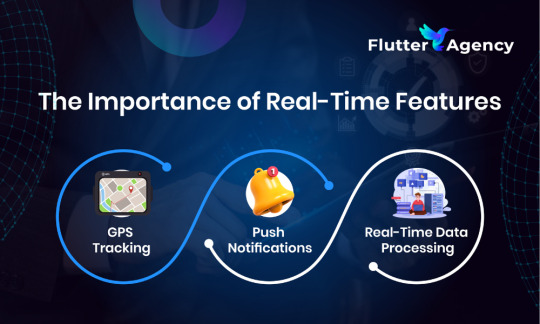
1. GPS Tracking
Lyft’s ride-sharing app hinges on real-time GPS tracking. This vital feature pinpoints vehicle locations instantly, keeping both drivers and passengers informed throughout their journey. The technology turns smartphones into dynamic maps. They show moving cars as they navigate city streets. This helps coordinate pickups, estimate arrival times, and ensure safety. Riders can track their driver’s route and ETA. Drivers can use it for turn-by-turn navigation. This feature boosts transparency and trust between the service and its users. It improves the overall experience.
2. Push Notifications
Push notifications play a critical role in keeping users informed. Riders get updates on requests, arrivals, and payments. Drivers are notified of new requests. They get updates on rider locations and cancellations. This constant communication keeps users informed, without checking the app. It makes the ride process smooth.
3. Real-Time Data Processing
To deliver a seamless booking experience, real-time data processing is essential. Low-latency data transmission ensures quick ride matching, updates, and fare calculations. For example, when a user books a ride, the system quickly checks available drivers, arrival times, and distances. It then provides instant feedback. This fast processing reduces delays. As a result, both drivers and riders enjoy a smooth, efficient experience.
Real-time features like GPS and notifications boost user satisfaction, safety, and efficiency.
Technology Stack for Building a Ride-Sharing App
A robust, scalable tech stack forms the backbone of any successful ride-sharing app. Lyft’s model demands a powerful foundation to handle high user demand, real-time data processing, and seamless transactions. It must handle real-time data, user interactions, and geolocation services. Here’s a breakdown of essential components:
Mobile Development Frameworks:
When choosing a framework for mobile app development, prioritize performance and user experience. Some of the most popular options include:
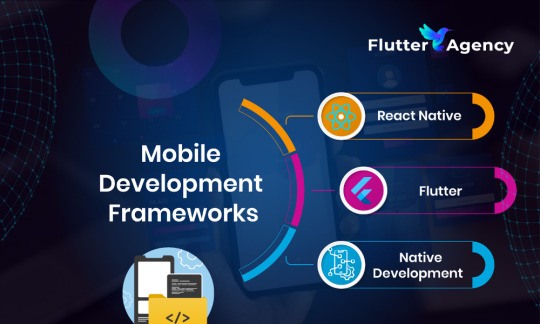
React Native: React Native is a popular framework for cross-platform apps. It lets developers create a shared codebase for iOS and Android. This speeds up development.
Flutter: Flutter is known for its speed and expressive UI. It’s perfect for startups and businesses that need quick app development. You can hire Flutter experts for faster and more efficient application development. Swift delivery meets user satisfaction in this balanced strategy, accelerating launch without compromising excellence.
Native Development (iOS/Android): For peak performance, use Swift (iOS) or Kotlin (Android) for native development. Native apps usually have better access to device hardware and sensors.
Backend Technology:
A reliable backend is the backbone of a ride-sharing app. Matching riders in real time, verifying users, and tracking locations are core functions this system manages seamlessly. It deftly coordinates these vital processes to keep operations running smoothly.

Node.js: Node.js is fast and scalable. It’s popular for real-time apps, making it perfect for a ride-sharing platform.
Python (Django): Python’s Django framework excels in web development. Its sleek design enables fast, scalable projects. Developers prize Django for its practical approach and high-level functionality.
Ruby on Rails: Startups thrive with Ruby on Rails. Its sleek syntax boosts productivity, making it an ideal framework for new ventures.
APIs and Tools:
To enable geolocation, payments, and chat, we must use third-party APIs and tools.
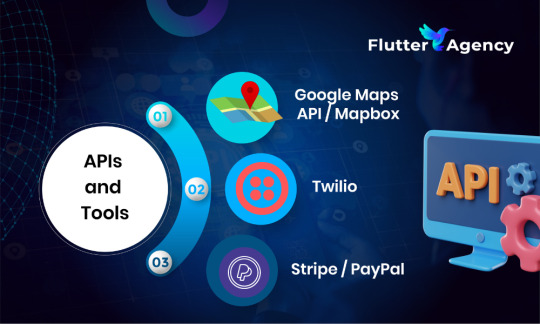
Google Maps API / Mapbox: These services allow users and drivers to track rides. They can estimate arrival times and navigate routes using real-time mapping and geolocation features.
Twilio: Twilio simplifies adding messaging services. It’s for SMS notifications and rider-driver communication.
Stripe / PayPal: For seamless payment processing, use payment gateways like Stripe or PayPal. They ensure secure transactions for users and drivers.
A ride-sharing app’s fate hinges on its tech stack. The right choice fuels growth, handles demand, and delights users. Smart developers weigh options carefully, knowing their decision shapes the app’s future.
A ridesharing app’s price tag in 2024 ranges from $70,000 to $200,000. Complexity, features, and technology choices drive costs up or down within this spectrum. Developers must achieve a balance between functionality and budgets when creating Lyft-like platforms.
Breakdown of Costs:

Backend Development: Tech stacks shape backend costs. Node.js, Django, or Ruby on Rails influence pricing for critical services. User authentication and payment gateways range from $3,500 to $20,000, depending on complexity and chosen framework.
Frontend Development: Cross-platform frameworks slash frontend costs. React Native and Flutter offer savings, with prices spanning $6,000 to $36,000. Feature complexity and target platform – iOS or Android – drive the final bill. Savvy developers leverage these tools to create mobile apps that are both efficient and budget-friendly.
Core Features: Features like geolocation and ride-booking will cost about $6,000 each. Adding advanced options like split fares and scheduling rides can increase the cost by $6,000 to $8,000 each.
UI/UX Design: A design that is easy to use on both iOS and Android devices will cost over $12,000.
The cost also depends on extra features. These include real-time tracking, fare splitting, and driver management systems. Remember that maintenance, marketing, and updates will increase the budget.
Also Read: Guide to Create Uber like Clone Taxi Application
Challenges in Developing a Ride-Sharing App

High Competition: The ride-sharing market has giants such as Lyft. These companies have significant brand recognition, financial resources, and advanced features. To stand out, a new app must be unique. It must offer new features or serve a niche market. This will distinguish it from its competition.
Driver retention: Engaged, motivated drivers drive success. Bonuses, flexible hours, and rewards spark retention. Smart incentives keep your team on the road and committed to excellence. However, many new platforms struggle to profit while providing these perks.
User Trust: Building trust with users is essential. This means using strong security, clear pricing, and full insurance. It also means high-quality service, with regular driver checks. Trustworthy experiences attract repeat customers and positive reviews. They are vital for growth in a competitive market.
Future Trends in Ride-Sharing Apps
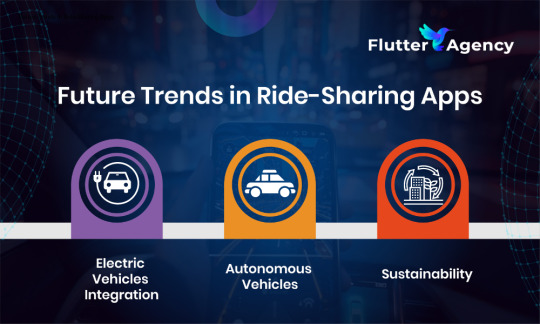
Electric Vehicles (EV) Integration: Electric cars are transforming ride-sharing. Uber and Lyft plan all-electric fleets by 2030, driven by sustainability goals. This green shift slashes emissions, complies with regulations, and appeals to eco-conscious passengers. Riders increasingly favor cleaner transportation options, accelerating the industry’s electric revolution.
Autonomous Vehicles: Self-driving breakthroughs reshape ride-sharing’s future. Tesla and Waymo lead the charge, pushing AI to new heights. Driverless cars slash expenses, boosting efficiency. Safety improves as human error fades. The revolution has begun, though its full impact remains unseen. This nascent technology promises a transformed industry landscape.
Sustainability: Ride-sharing platforms are adopting green initiatives with greater frequency. Other sustainability practices, besides EVs, can help. Carbon offset programs, carpooling, and shared rides can reduce carbon footprints. Such practices attract eco-conscious users. They can also differentiate themselves in a competitive market.
These trends suggest that new technology and a focus on sustainability will shape ride-sharing.
Launch Your Ride-Sharing App!
Start building your own Ride-Sharing App at a low cost.
LET'S DISCUSS
Final Thoughts
A ride-sharing app has great potential. The market is growing due to new tech and shifting consumer needs. There are many ways to create a unique, scalable platform. You can integrate electric vehicles and autonomous driving tech. You can also use real-time GPS tracking and secure payment gateways.
#Build a Ridesharing App like Lyft#Lyft Clone App Build#Custom App Development Services#Ride-sharing app development cost#Cost to build a Lyft clone#Lyft app development expenses#Lyft alternative app development cost#Ride-sharing app development pricing in USA#Custom ride-sharing app development#flutter app development
0 notes
Text
This day in history
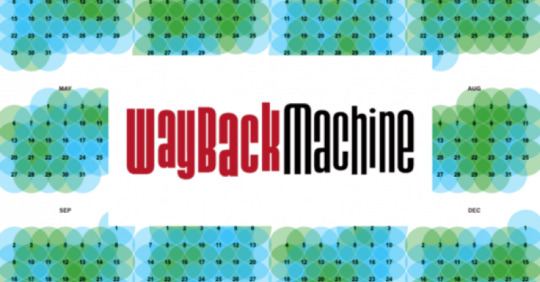
Support me this summer on the Clarion Write-A-Thon and help raise money for the Clarion Science Fiction and Fantasy Writers' Workshop!

#20yrsago Kalashnikov: US gov’t is pirating my AK-47 design https://www.nytimes.com/2004/07/26/world/who-s-a-pirate-russia-points-back-at-the-us.html
#20yrsago Real ships guerrilla DRM for the iPod https://www.nytimes.com/2004/07/26/business/media-realnetworks-plans-to-sell-songs-to-be-played-on-ipod.html
#20yrsago 30,000 anti-Induce Act letters sent to Congress https://web.archive.org/web/20040723084653/https://action.eff.org/action/index.asp?step=2&item=2918
#10yrsago Journalist believes his phone was hacked by spooks at HOPE X, will upload image for forensics https://thecryptosphere.com/2014/07/23/report-from-hope-x-surveillance-snowden-stratfor-and-surprises/
#10yrsago What’s original? Cloning games versus making games https://www.raphkoster.com/2014/07/23/when-is-a-clone/
#10yrsago Great video explainer: Vint Cerf on ICANN and NTIA https://www.youtube.com/watch?v=vd3dH90tdhk
#5yrsago Trade war: Hasbro is shifting manufacturing to Vietnam and India, drawing down production in China https://www.bloomberg.com/news/articles/2019-07-24/world-s-top-toymaker-joins-companies-leaving-china-s-factories
#5yrsago #Rickyrenuncia: Bowing to popular pressure, Puerto Rican governor Ricardo Rossello has resigned https://www.bloomberg.com/news/articles/2019-07-24/puerto-rico-lawmakers-push-to-impeach-crisis-beset-governor
#5yrsago #29leaks: someone leaked 15 years’ worth of data from London’s most notorious shell-company factory https://www.counterpunch.org/2019/07/24/this-london-firm-helps-the-wealthy-hide-assets-or-steal-them-luckily-we-have-15-years-of-their-client-communications/
#5yrsago E-scooter companies are desperate for repo men to stop impounding their vehicles https://www.theverge.com/2019/7/24/20696405/dockless-scooters-share-repo-men-repossessor-lawsuit-tow-yard-lime-bird-lyft-uber-razor
#5yrsago Adblocking: How about nah? https://www.eff.org/deeplinks/2019/07/adblocking-how-about-nah
#5yrsago Countries with higher levels of unionization have lower per-capita carbon footprints https://www.researchgate.net/publication/331445998_Is_Labor_Green
#5yrsago Analyzing 800 daily tweets that say “Today was the day that Donald Trump became president” https://twitter.com/waxpancake/status/1154098035183329280
12 notes
·
View notes
Text
Can an Uber Clone App Accelerate the Development and Revenue of Your Company?
Recent years have witnessed the ride-hailing sector grow at an unprecedented rate, with businesses like Uber, Lyft, and Grab revolutionising commuting. Customers' behaviour was altered by the on-demand model, which also opened up fantastic prospects for entrepreneurs and companies looking to enter the transportation sector. An Uber clone app is unquestionably the quickest and most straightforward route to success if you're considering starting your own online ride-hailing company. However, can your company's revenue growth be accelerated by an Uber clone app? Let's check.
1. The Power of an Uber Clone App
An Uber clone app is a ready-made, customizable solution that replicates Uber’s core functionalities while allowing businesses to add their unique features and branding. Instead of building a ride-hailing app from scratch, which can take years and cost a fortune, an Uber clone app provides a faster go-to-market strategy, enabling entrepreneurs to focus on business expansion and customer acquisition rather than app development challenges.
2. Faster Market Entry = Faster Revenue Generation
Speed is crucial in today’s competitive business landscape. Developing an app from scratch involves extensive planning, coding, testing, and deployment, which can significantly delay market entry. With an Uber clone app, businesses can launch within weeks instead of months or years, allowing them to start generating revenue almost immediately.
Moreover, an Uber clone app is equipped with pre-built features such as:
Real-time GPS tracking for accurate navigation.
Seamless ride-matching algorithms to optimize driver and passenger pairing.
Multiple payment gateways for customer convenience.
Admin dashboards for business owners to manage rides, payments, and analytics.
This quick setup gives businesses a competitive edge, helping them attract drivers and riders much faster than a traditional app development process would allow.
3. Scalable and Future-Proof Business Model
One of the most attractive aspects of an Uber clone app is its scalability. Whether you start with a small fleet in one city or plan to expand globally, a well-built Uber clone app allows you to scale operations seamlessly. The platform can support growing demand, integrate new features, and adapt to market trends without requiring extensive redevelopment.
Additionally, businesses can diversify their offerings using the same platform by adding features such as:
Bike taxis for short-distance travel.
Carpooling options for eco-conscious riders.
Luxury ride services for premium customers.
Corporate ride packages for business travelers.
4. Enhanced Customer Experience Leads to Higher Retention
In the ride-hailing industry, customer experience is king. An Uber clone app provides a smooth, user-friendly interface, ensuring passengers can book rides with just a few taps. Features like real-time tracking, instant fare estimation, multiple payment options, and in-app chat support enhance user satisfaction, leading to higher retention rates and repeat business.
Moreover, by integrating AI-driven recommendations and personalized promotions, businesses can boost customer engagement, leading to increased ride bookings and revenue growth.
5. Multiple Revenue Streams for Higher Profitability
An Uber clone app is not just about booking rides—it’s a multi-revenue-generating platform. Here’s how businesses can maximize profits:
Ride Commissions – Earn a percentage of every ride completed on the platform. Surge Pricing – Increase fares during peak hours to optimize revenue. Driver Subscription Plans – Offer premium memberships for drivers with benefits like reduced commission rates. Corporate Tie-Ups – Partner with businesses to provide dedicated transportation services. In-App Advertising – Generate additional revenue by promoting brands within the app.
6. Cost-Effective Business Expansion
A well-developed Uber clone app reduces operational costs significantly. Unlike traditional taxi businesses that require physical infrastructure, dispatch centers, and large management teams, a ride-hailing platform automates booking, payments, driver tracking, and analytics, thereby lowering costs and boosting profit margins.
Furthermore, with AI-driven demand forecasting, businesses can optimize driver allocation, reduce idle time, and increase efficiency, resulting in higher earnings for both the platform and the drivers.
7. Customization for a Unique Brand Identity
While an Uber clone app provides a strong foundation, businesses can customize the app to reflect their unique brand identity. From logo, color schemes, and UI design to exclusive service features, companies can tailor the app to stand out in the competitive market.
Additionally, integrating local language support, loyalty programs, and region-specific ride options can enhance brand appeal and increase adoption rates in targeted markets.
8. Trust and Safety – Building a Loyal User Base
Safety is a top priority for both riders and drivers. A feature-rich Uber clone app incorporates safety measures such as:
Live location sharing with emergency contacts.
SOS buttons for immediate assistance.
Driver and passenger verification systems.
Trip rating and feedback mechanisms.
By ensuring a secure and trustworthy platform, businesses can build customer confidence, which directly impacts long-term success and revenue growth.
9. The Future of Ride-Hailing: AI and Automation
The future of ride-hailing is evolving, with AI-powered automation playing a crucial role. By integrating machine learning algorithms, businesses can optimize fare pricing, demand prediction, and ride allocation, making their Uber clone app even more efficient and profitable.
Additionally, with advancements in autonomous vehicles and electric car fleets, businesses investing in ride-hailing apps today will be better positioned for long-term success as the industry shifts toward sustainable and self-driving technologies.
Conclusion: Is an Uber Clone App Right for Your Business?
The answer is a resounding YES! An Uber clone app is the fastest, most efficient, and cost-effective way to enter the on-demand transportation market. Whether you’re a startup looking to disrupt the industry or an established business seeking digital transformation, an Uber clone app can accelerate your company’s growth, streamline operations, and boost revenue.
Ready to launch your ride-hailing business? Let’s make it happen! Contact Unimak Technologies today to get started with your custom Uber clone app.
0 notes
Text
The Benefits of Using an InDrive Clone for Your Taxi Service
Introduction
The taxi industry has undergone a massive transformation with the rise of ride-hailing apps. While traditional taxi services relied on fixed fare models, modern platforms like InDrive have revolutionized the industry with a unique fare negotiation system, allowing passengers and drivers to agree on a mutually beneficial price. If you are looking to upgrade or start your taxi business, investing in an InDrive Clone can provide significant advantages over conventional ride-hailing solutions.

What is an InDrive Clone?
An InDrive Clone is a ready-made, customizable ride-hailing app solution that replicates the core functionalities of the InDrive platform. Unlike traditional apps like Uber or Lyft, an InDrive Clone allows passengers to propose fares while drivers have the flexibility to accept, reject, or counter-offer, creating a fair pricing model for both parties.
Key Benefits of Using an InDrive Clone for Your Taxi Service
1. Cost-Effective and Fast Market Entry
Developing a ride-hailing app from scratch is expensive and time-consuming. An InDrive Clone provides a pre-built framework that is customizable, reducing both development costs and launch time. This means you can start your taxi business quickly and efficiently without heavy investment.
2. Flexible Fare Negotiation
Unlike traditional taxi apps that follow a fixed pricing model, an InDrive Clone empowers users to set their own fares. Drivers can then accept, reject, or counter the offer, ensuring a dynamic and fair pricing structure. This results in better engagement, increased rides, and customer satisfaction.
3. Enhanced User Experience
A seamless user-friendly interface is key to customer retention. An InDrive Clone offers features such as:
Real-time GPS tracking
Multiple payment options (cash, card, wallet)
Instant booking & ride history
Ratings & reviews for drivers and passengers
4. Higher Earnings for Drivers
Traditional ride-hailing apps impose high commission rates on drivers, significantly reducing their earnings. With an InDrive Clone, you can provide better earning opportunities by allowing drivers to negotiate fares, giving them control over their income while keeping your business profitable.
5. Increased Customer Retention
Customers prefer a transparent and budget-friendly ride experience. The fare negotiation feature in an InDrive Clone helps retain users as they can choose rides within their budget. A satisfied customer base leads to higher ride frequency and long-term loyalty.
6. Scalability and Customization
Whether you operate in a single city or multiple regions, an InDrive Clone can be scaled and customized to fit your business needs. From language preferences to region-specific fare rules, you can adapt the platform as your business grows.
7. Multiple Revenue Streams
With an InDrive Clone, you can generate revenue through:
Ride commissions (set percentage per ride)
Subscription models for drivers
Surge pricing during peak hours
In-app advertisements & promotions
Why Choose Miracuves Solutions Pvt Ltd for Your InDrive Clone?
To successfully implement an InDrive Clone, you need a reliable and experienced development partner. Miracuves Solutions Pvt Ltd specializes in customizable, scalable, and feature-rich ride-hailing solutions to help you build a thriving taxi business.
Why Choose Miracuves?
✔ Expertise in ride-hailing app development ✔ Fully customizable & secure InDrive Clone solution ✔ Seamless integration of GPS tracking & payment systems ✔ Ongoing technical support & maintenance
🚖 Ready to revolutionize your taxi business? Contact Miracuves Solutions Pvt Ltd today!
0 notes
Text
Top Challenges in Taxi Booking App Development and How to Overcome Them?
The swift expansion of the ride-hailing sector is altering the dynamics of urban areas. Additionally, taxi booking apps have become an essential part of our everyday lives. As industry leaders like Uber and Lyft set the standard, companies are encouraged to create their own solutions. But there are special problems in developing taxi booking software. Whether it’s an Uber clone or something else.…
0 notes
Text
Many British thermal units* later
Vice linkedin to carnal flesh this writer, (a married heterosexual doofus, – whose alter egos named and highlighted courtesy
Gallant and Goofus) attones to heat these lovely bag of bones
amazingly graceful human specimen more so than required to generate clones,
whose jibber-jabber feeble poetic words
crafted for no particular rhyme nor reason
analogous to babbling drones aging musculoskeletal physique groans
kvetching synonymously nsync with (metronome like) tick tock
where alphanumeric, esoteric, and generic
garden variety alter kocker
(eons ago a foo fighting
beastie boy baby boomer) and/or like
kin himself to famous mummified Pharaoh ala King Tutankhamun's moans wrapped in long strips of linen,
indistinguishable among rolling stones netting sometimes wrapped
each finger and toe individually against many future unknowns
as the soul of mine traveled across cosmos temporarily filling black hole sun, and kerplunked across space/time continuum
easily mistaken for pinteresting soundcloud virtual xylophones providing an x uber rent lyft along the edge of night amidst dark shadows to the outer limits of many twilight zones.
Hence, I will beg, borrow or steal loot and make a fair trade
with a paperback writer,
who exudes profound wisdom
as keen philosophical thinker oh no... no... no, this non smoking bandit, nor drinker will explain to police officer, that me willingly doth plead
guilty as freshly showered stinker
without spectacles yours truly can only blinker
if nabbed he
submissively relinquishes freedom
to do time inside
state of the art clinker, where ample heat warms hoodwinker covering mine rickety musculoskeletal, while escorted to attend requisite appointment with headshrinker with the icy name of Mister Rinker. Token Doubting Thomas here resorted to life of doggone petty crime without fanfare for this common man dirt poor bloke who doth air, (not that anybody
will give a rat's a$$, nor care
a jot regarding me squalid shiftless schlepper bereft of a place to call home
anemic checking and savings accounts with Citizens Bank describes my financial welfare), and similar to Scrooge, (who mutters "bah humbug**" grossly dislikes Xmas time of year, not always the case with yours truly,
cuz as a lad din
Southeastern Montgomery County
one cute as a button little boy with
short cropped strawberry blond hair, (unadulterated, accursed and unbiased opinion), aye declared papa tricked out as Santa Claus
divine and stood bug eyed while shopping with mother and siblings amidst madding crowd (at the King of Prussia Mall) then no living nightmare
not like today November twenty ninth
tooth how sinned twenty four
bajillion people angrily glare with livid rage expect whistleblower shrill shrieking against crass consumerism thru air courtesy bull-let-in aiming crosshair, whereat vendors pushing merchandise hooping he/she can scare
up brisk business, hence
caveat emptor i.e. buyer beware aside from aforementioned hypothetical scenario - I won't ever overspend credit cards, which profligate net spending occurs within glorious land of bilk and money Amazon qua America OnLine, the home of the free..., where distribution of wealth very unfair.
Yukon still experience enjoyment of beauty,
according to this poet of Perkiomen Valley with less sense and sensibility than a baboon, or other naked ape, cuz his pride and prejudice got in the way while seeking love and friendship, nevertheless he can bet
dollars to donuts (with glazed eyes) without oneself spending themselves silly
garnering mountain due of debt
subsequently cue sax and violins gently weeping (think guitar coming
unstrung at every fret),
thus... ya gotta get get aware simple pleasures experience mindfulness, such as zipping across globe on private jet hobnobbing with rich and famous, then swinging by utmost secluded unconventional monastery, and meet...
nun other than one cell bated abbott cost 'ello to thine reverent Mother.
* - The exact origin of the British Thermal Unit (BTU) is unclear, but Thomas Tredgold, a British railroad engineer, is the closest person to being credited with its discovery. Tredgold's definition of the BTU was the quantity of pounds avoirdupois that would raise the temperature of a cubic foot of water by one degree Fahrenheit.
** - The word "humbug" has been used since the 1700s to describe something or someone that is false or deceptive. It's also been used to describe a trick played on unsuspecting people. The word's exact origin is unknown, but some theories include: For example, you might say "Bah humbug!" if someone won't let children play catch on their lawn
0 notes
Text
Launch your ride sharing app today with our Lyft clone script! 🚀 Get started now and watch your business soar to new heights. Visit: https://migrateshop.com/lyft-clone/
0 notes
Text
Build a Lyft Clone Taxi App- A perfect Alternative for Uber
Are you willing to enter the ride-hailing industry after being inspired by Uber and Lyft? You must focus on developing your own Taxi Booking and Management software with features of Uber and Lyft.
UnicoTaxi builds readymade and white-labeled solutions with the most advanced features like schedule booking, Multi-language, Different payment options SOS button, etc.,
Visit us and have a try our Demo version for Free.
#lyft#lyft clone app#lyft clone script#lyft like app#lyft like taxi app#ride hailing software#uber taxi app#uber like taxi app#taxi booking#taxi booking app#unicotaxi
0 notes
Text
#Build a Ridesharing App like Lyft#Lyft Clone App Build#Custom Application Development Services#Ride-sharing app development cost#Cost to build a Lyft clone#Lyft app development expenses#Lyft alternative app development cost#Ride-sharing app development pricing in USA#Custom ride-sharing app development
0 notes
Text
Appysa Technologies provides the best lyft/Grab App Clone for $499USD. For more features and demo visit https://appysa.com/lyft-grab-clone/ or whatsapp to +91-7200593059
0 notes
Text
Download Uber InDriver APK: Ubers Competitors
Download the Uber InDriver APK for a top-tier ride-sharing experience. Enjoy competitive pricing, reliable rides, and user-friendly features. Get the latest InDriver APK now. explore the top competitors of Uber in the ride-sharing market. Discover alternatives like Lyft, Bolt, and DiDi, offering reliable and cost-effective transportation services
0 notes
Text
As someone who public transits A LOT..... that fucking "last mile" is a mess. It'll never happen "because capitalism" but, some philanthropist tech bro needs to release a rideshare clone that the taxi companies/busses can get on board with. Some kind of central availability resource that any local transit can publish to and end users can consume. ( yeah yeah phone books ) but, seriously.... that Lyft/Uber UI of _Come get me and take me to...._ : here are a half dozen choices with timing & pricing : submit request. I DGAF if it's Pat who drives their personal car, Yellow Cab, or FYI the Bus will get you there in 20 with a 5 min walk on both ends.

4K notes
·
View notes